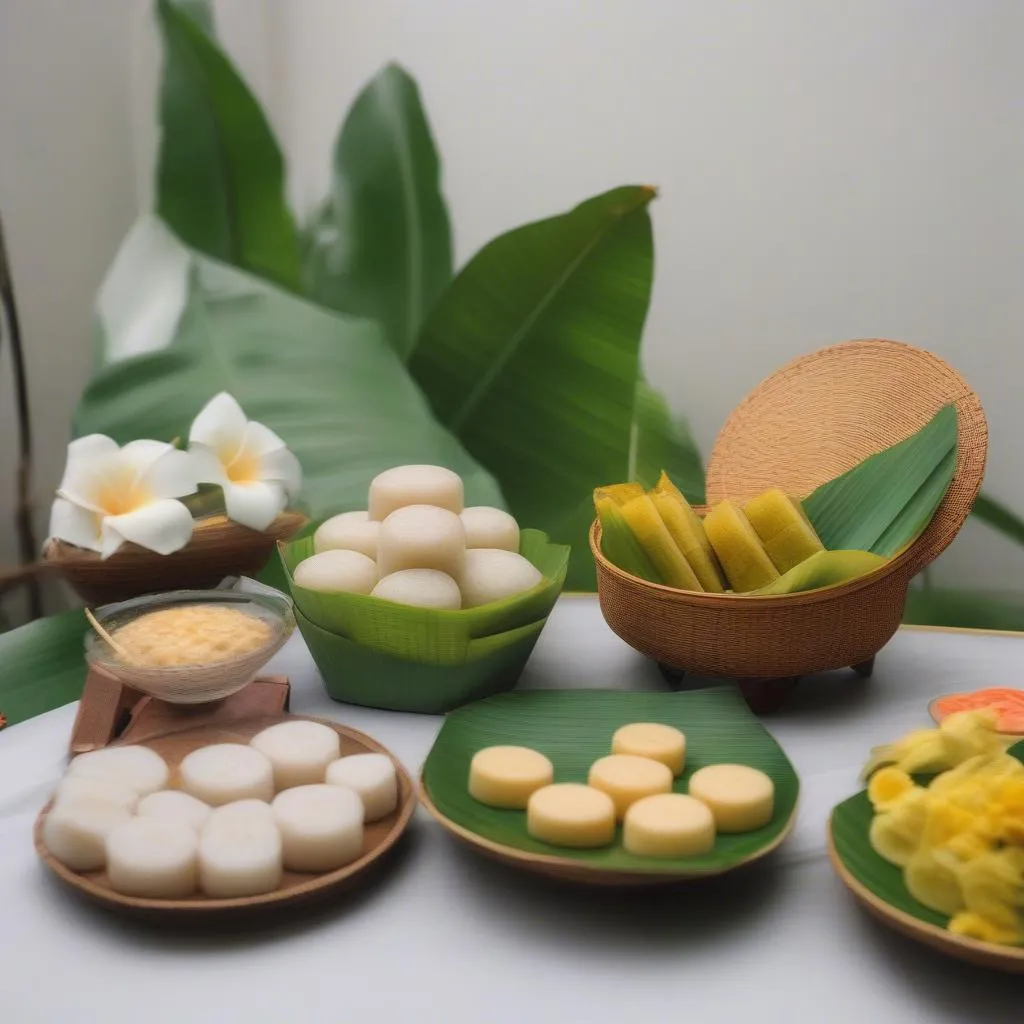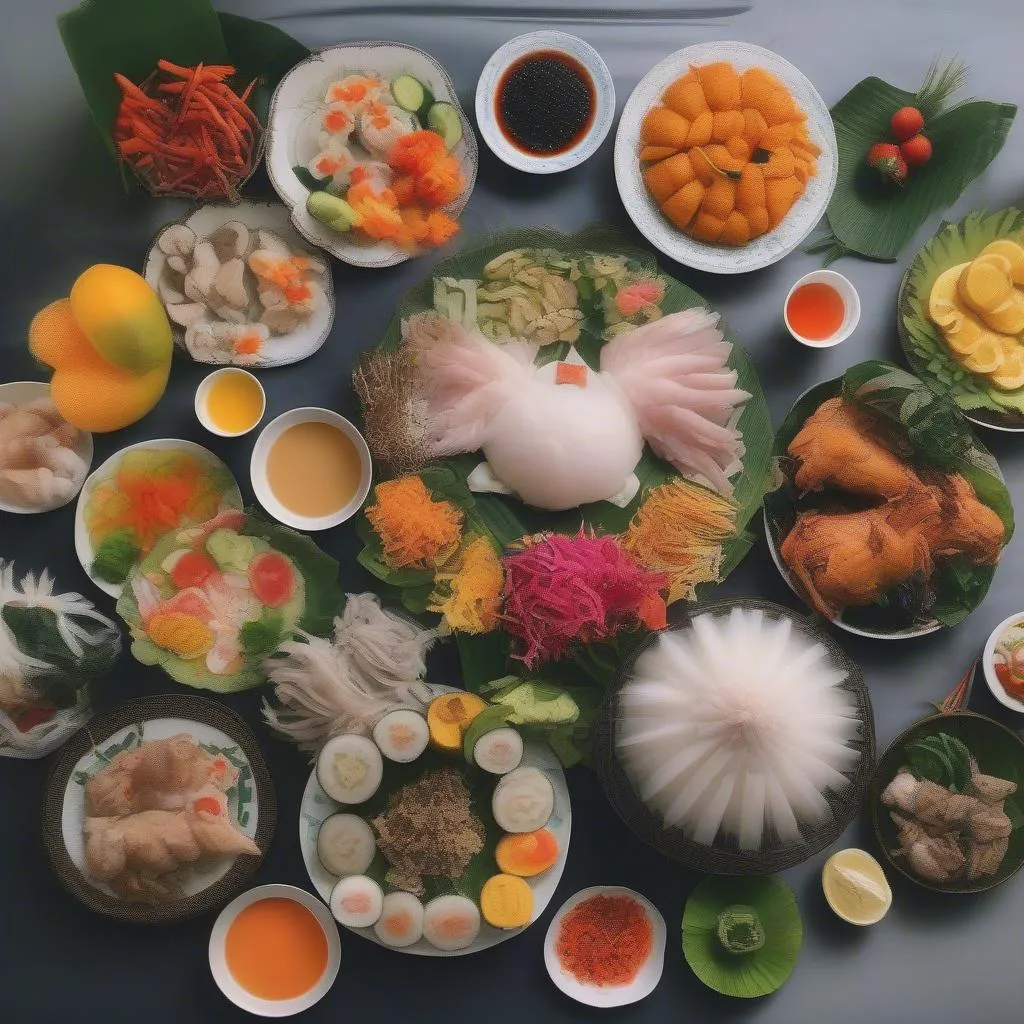Imagine stepping back in time, into a world steeped in legend and tradition. You find yourself amidst the vibrant tapestry of Vietnamese history, surrounded by the echoes of ancient rituals and the tantalizing aromas of a bygone era. This is the world evoked by “Món ăn Dâng Vua Hùng,” the ceremonial food offerings presented to the Hung Kings, the mythical founders of Vietnam. These culinary creations are not merely dishes; they are edible embodiments of history, culture, and reverence, offering a fascinating glimpse into Vietnam’s rich heritage.
“Món ăn dâng vua Hùng” isn’t just a single dish, but rather a collection of carefully chosen delicacies, each imbued with symbolic meaning. The selection varies depending on the region and specific occasion, but some elements remain consistent, reflecting the agricultural roots and spiritual beliefs of the Vietnamese people.
One quintessential element is glutinous rice, often steamed in intricate molds to resemble mountains, symbolizing prosperity and a bountiful harvest. This sticky rice, a staple in Vietnamese cuisine, takes on a sacred aura in this context, connecting the present generation to their ancestors and the land they cultivated.
 Banh Chung and Banh Day offerings
Banh Chung and Banh Day offerings
Another essential offering is “Banh Chung” and “Banh Day,” two iconic rice cakes deeply ingrained in Vietnamese culture. “Banh Chung,” square-shaped and representing the earth, is made with glutinous rice, mung beans, and pork belly, meticulously wrapped in banana leaves. “Banh Day,” round and symbolizing the sky, is simpler, crafted solely from glutinous rice. These cakes, with their contrasting shapes and flavors, represent the balance of yin and yang, a fundamental concept in Vietnamese philosophy.
Beyond rice and rice cakes, “món ăn dâng vua Hùng” also features a variety of other dishes, each chosen for its symbolic significance. Fruits, representing the bounty of nature, are a must-have, while boiled chicken, symbolizing purity and good fortune, often graces the offering table. Other dishes might include spring rolls, representing prosperity, or Vietnamese sausage, signifying abundance.
 A table laden with Hung Kings' offerings
A table laden with Hung Kings' offerings
The preparation of “món ăn dâng vua Hùng” is a meticulous process, often a communal effort imbued with respect and a sense of shared heritage. Families and communities come together, their hands working in unison as they prepare the offerings, their voices weaving tales of their ancestors and the significance of each dish. This shared activity strengthens familial and community bonds, reinforcing the importance of tradition and remembrance.
Tasting these dishes is like taking a bite of history, each flavor carrying the weight of generations past. The subtle sweetness of the glutinous rice, the savory filling of the “Banh Chung,” the refreshing burst of the tropical fruits – they all tell a story, whispering tales of ancient rituals, of a people deeply connected to their past, and of a culinary tradition that has survived through millennia.
“Món ăn dâng vua Hùng” is more than just a culinary experience; it’s a cultural immersion, a journey back in time, a celebration of heritage. It’s a reminder of the power of food to connect us to our past, to our communities, and to the very essence of what makes a culture unique. So, when you have the opportunity to savor these dishes, do so with an open mind and a curious palate, for you are not just tasting food, you are tasting history.